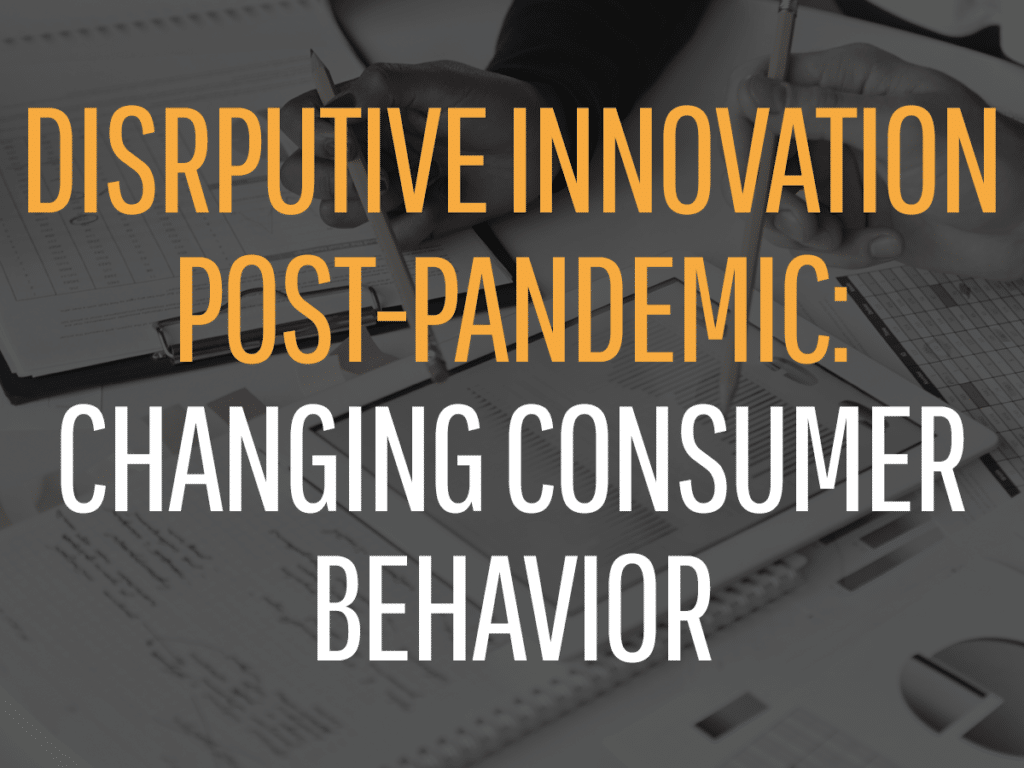Every retailer needs to get to know a new customer base: post-pandemic shoppers. We dive into the critical shifts in consumer behavior that will affect how you do business.
The initial fears of the pandemic have been lifting, giving way to a pervasive sense of caution. People have been leaving their homes to visit outdoors with loved ones, but masks remain a must-have accessory for every social scene. A new equilibrium is emerging, and it has the potential to reshape the entire retail landscape.
As the retail world attempts to return to some sense of normalcy after being rocked by the COVID-19 pandemic, consumers are thinking more critically about their shopping choices than they may ever have imagined. How will their expectations and experiences change in the post-pandemic world, and how will that reshape the retail landscape?
While no one can know precisely what the future holds, we’ve compiled the collective wisdom of some leading futurists and brand marketers to shine a light on how the COVID-19 pandemic will change the face of the industry. To gain these insights, we conducted a survey and interviews with retail professionals on the future of retail in a post-pandemic world. According to these visionary thinkers, flexibility, agility, and outside-of-the-box thinking that puts a fresh spin on the shopping experience will be the name of the game. Brands that find ingenious ways to pivot through disruptive innovation during this time could find an appreciative consumer base.
According to Aaron Cheris, Bain & Company Partner of Consumer Strategy & Marketing division, the following fast-evolving trends are emerging:
- magnified income disparity
- a desire for locally produced goods
- growth in responsible consumption
- priority for convenience
- heightened social media engagement
- a focus on online purchasing
- the revamped in-store shopping experience
All of these trends are influencing how consumers shop and where they spend their money. To succeed in this time of great transformation, every retailer needs to get to know a brand-new customer demographic: the post-pandemic shopper. Let’s take a journey into the future, delving into the specific trends in consumer behavior that are changing the face of retail, to help you find your competitive advantage in a post-pandemic world.
Emphasis on Practicality and Affordability
Post-pandemic consumers will focus on practicality and affordability, prioritizing basic needs over luxuries, Cheris asserts. These emerging shifts in consumer needs and behaviors deserve close attention, as a company’s ability to adapt to these changes will directly affect its future success.
Our survey found that marketing leaders predict specific industries, such as household products, consumer electronics, appliances, hobbies and games, health and beauty, furniture, home improvement, and food and beverages, will see an increase in consumption. Not coincidentally, these industries tend to focus on basic needs rather than luxury purchases.
That prediction on consumer behavior has already proven accurate for one of our clients, a plastics manufacturer of outdoor and indoor storage containers, deck furniture, and sheds, which is exceeding its sales forecast for products it sells on Amazon during this pandemic. The company has had to temporarily halt some products’ sales because it couldn’t meet the demand surge. Chameleon Partner, E-commerce & Merchandising, Ilan Tito, has also seen this trend.
Survey respondents indicated that industries like luxury goods and fashion would see a substantial decline. This aligns with an 89% drop in clothing store sales in April, resulting in 73% of clothing retailers offering substantial discounts for website sales; the median deal was 40%, reports Digital Commerce 360.
In an interview conducted by Chameleon teammate Ron Biore (Interim CEO), his confidant Rita McGrath, Professor of Management at Columbia Business School, agreed. “Post-pandemic, there will be massive amounts of people with massive financial issues,” McGrath continues. Companies will need to tailor their offerings to this audience. “Utilitarian retail becomes much more important—you see that now with Walmart and Target and Amazon and Tractor Supply doing incredibly well.”
Priority on Human Rights and Needs
In a world where many people have been grappling for access to essentials, they’ll also have an amplified focus on basic human needs — “the right to breathe clean air, the right to food, the right to shelter,” says McGrath. “Anything that interferes with these basic needs now becomes friction points,” she adds. Many Millennials are confronted for the first time with concerns about job security and safety, influencing their purchasing decisions. This will influence brands’ messaging and emphasize strategies for reaching a broader customer base in convenient and safe ways for the customer.
Focus on Social Responsibility
Similarly, customers will expect companies to increase their focus on corporate social responsibility. There will be a rise in concern about where products come from—consumers, especially Millennials, will prefer nationally and locally produced goods. Companies may need to pay more attention to where everything in their supply chain comes from as consumers demand more transparency than ever, with priority for local production.
How will all this affect brand personas? Brands will increasingly need to characterize themselves as socially responsible, both in terms of customer interactions and how they produce their products.
Giving-back partnerships will be especially important. Authentic giving-back partnerships that come from a desire to contribute to the community, rather than being overly sales-driven, will have the most positive effect on customers. As mentioned, disparities that already existed are being magnified by the pandemic.
Issues like access to healthy food, wi-fi, and healthcare coverage stemming from income disparity are only becoming more pronounced. Customers are becoming more attuned to these social issues as they experience them, fear experiencing them, or witness others going through them which heavily influences consumer behavior. Companies that work to help the communities they operate in with these difficulties will gain appreciation from their audience.
Attention to Customer Safety
As social media use skyrockets, we’ll see an upsurge in reliance on influencers to convey a company’s social responsibility and hygienic practices. Hearing from voices people trust about the health and safety of products will make all the difference. Thus, we’ll see a rise in affiliate programs that work toward this goal.
Regulations around sanitary practices will take shape as well, and consumers will scrutinize marketing closely to determine how conscientious companies are about health and hygiene. Gaining consumers’ trust in this area will prove essential to surviving in the future marketplace. Personalization and messaging will be essential.
Responding to these emerging needs and expectations, some companies have shifted their product offerings during the pandemic. For instance, Little Tikes, a children’s toy manufacturer, makes respirators and face shields, and many distilleries are producing hand sanitizers. Other companies offer kids’ activities, like tutorials on how to sew and online piano lessons, while Disney is organizing concerts that families can watch from their living rooms. This shift may help them persevere through the pandemic and beyond as customers are now even more emotionally connected to these brands because of their ingenuity and ability to pivot in the middle of a crisis.
Have you noticed any changes in consumer behavior? We’d love to hear about your experiences and observations so we can work to provide the most relevant content during this unprecedented time of transition. Stay tuned for Part 2 of this series, where we’ll delve into the role of innovation in the post-pandemic world.
Sources
CNN, “JC Penney Files for Bankruptcy”
https://www.cnn.com/2020/05/15/business/jcpenney-bankruptcy/index.html
Digital Commerce 360, “6 Ways the Coronavirus Pandemic Will Impact eCommerce”
https://www.digitalcommerce360.com/article/coronavirus-impact-online-retail/
Nielsen, “COVID-19: Tracking the Impact on FMCG, Retail and Media”
https://www.nielsen.com/us/en/insights/article/2020/covid-19-tracking-the-impact-on-fmcg-and-retail/





